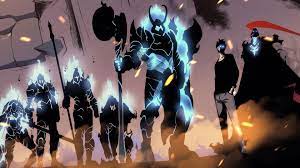Art has always held a profound significance in human history, transcending borders, cultures, and time periods. It serves as a vibrant tapestry, woven from the threads of human expression, imagination, and emotion. From the ancient cave paintings of Lascaux to the modern digital artistry of today, the world of read manganato has continually evolved, leaving an indelible mark on our collective consciousness.
Art, in its myriad forms, has the unique ability to reflect the soul of a society. It mirrors the thoughts, emotions, and experiences of individuals and communities alike. The strokes of a brush on canvas, the delicate melodies of a symphony, the graceful movements of a ballet dancer—all of these are languages of the heart, speaking volumes beyond mere words. Through art, we communicate our joys, our sorrows, and our aspirations, creating a timeless connection between generations.
One of the most enchanting aspects of art is its power to transport us to different realms and eras. Whether it’s a visit to the Louvre in Paris, where the Mona Lisa’s enigmatic smile whispers secrets from the Renaissance, or a stroll through the bustling streets of New York City adorned with street art, art is a vehicle that transcends time and place. It allows us to explore the thoughts and emotions of artists long gone or to glimpse the future through the eyes of visionaries.
Moreover, the arts serve as a catalyst for change and social progress. Throughout history, artists have been at the forefront of challenging societal norms and sparking discussions on important issues. From Picasso’s Guernica, which protested the horrors of war, to the powerful words of Maya Angelou and her fight for civil rights through poetry, artists have used their craft to inspire change and give voice to the marginalized.

